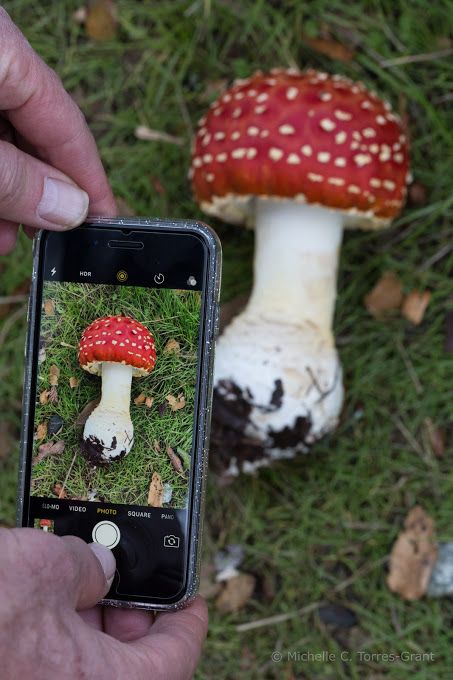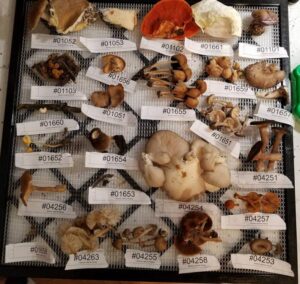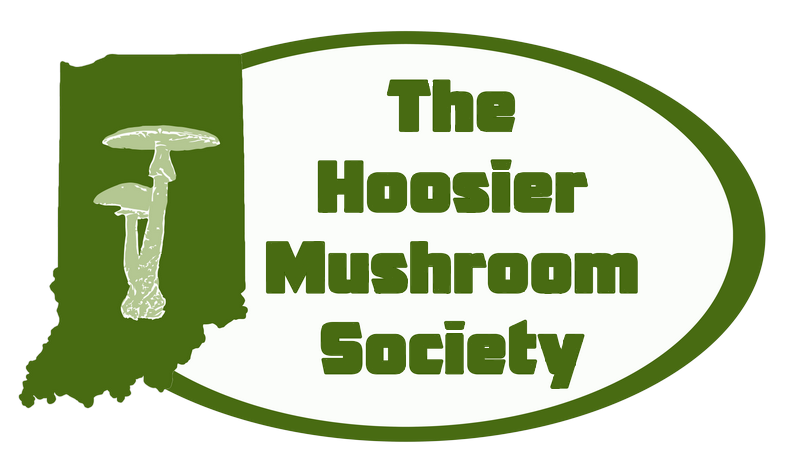2024 Continental MycoBlitz
Join the Network!
View the Spanish language page.
View the French language page.
West Coast Online MycoBlitz 2024
January 12 – 28, 2024 – Project Link
Summer Continental MycoBlitz 2024
August 9 – 18, 2024 – Project Link
Target: Hygrocybe
Fall Continental MycoBlitz 2024
October 18 – 27, 2024 – Project Link
Target: Hygrophorus
Please review our final shipping notes below and some shipment preferences before submitting.

**Are you also looking to participate outside of the MycoBlitz dates from one of the “Open Call” areas? Check out the Free Sequencing page for more details.**
Welcome to the third year for our online, continental-scale mushroom-collecting foray! It is a part of our effort to document all of the macrofungi that exist in North America. The Continental Mycoblitz will be conducted in three parts this year – with dates available to optimize both east and west coast collections. To participate just review the requirements below, post your observations to the iNaturalist project during the foray week, and submit your ten (10) most interesting collections to our processing facilities. Thousands of specimens from the event will be selected for DNA sequencing. Your most interesting finds can help us to understand the mushrooms of North America. We look forward to discovering fungi with you!
What is a MycoBlitz?
You may have heard of a “BioBlitz” – an intense, and usually time limited survey of all of the organisms living in a given geographic area. A MycoBlitz is a similar survey, but with the focus solely on fungi. Participants work to catalog as many species as they can from the survey area, during the survey time period.
Co-sponsors and Specimen Commitments
Overview of the Process
The 2024 Continental Mycoblitz is open to anyone who is willing to make scientifically valuable collections of mushrooms – including photography, field notes, and submitting a dried specimen. Any individual or organization can submit their most unique/interesting/exciting collections from the foray week to the project. Mycologists and foray partners will examine each collection and will perform DNA sequencing on thousands of the specimens that are submitted. The best collections will have geotagged color photographs of the mushroom from multiple angles, a completed field data slip, and properly dried mushrooms. You have the chance to make a significant contribution to our knowledge of fungi from North America by submitting specimens to this project.
Participation is as easy as:
1. Print Voucher Slips & Post to iNat Project w/ Voucher Number
2. Dry Specimens
3. Mail them in for DNA
How to Participate
1. Download Voucher Slips – Download and print your collection slips. These slips ensure the basic data is collected and help you to organize your collections. (usage of these slips is optional, but highly recommended, as it helps with organization of specimens.)
2. Download the iNaturalist Mobile App – Both Android and IOS versions are available. Check your preferred app store for the download. If you do not have a mobile device, you can participate by utilizing the web interface to report your observations.
3. Join the “West Coast Online MycoBlitz 2024,” “Summer Continental MycoBlitz 2024” and/or the “Fall Continental MycoBlitz 2024” projects on iNaturalist – You can join from the mobile app or from your favorite web browser. You can join this project at any time.
During Foray Week
1. Create new observations of mushrooms you encounter. This can be done through the iNaturalist mobile app or web interface. With each new observation, be sure to select the project for your event and whether you collected the specimen. The mobile app uploads the photos to the observational reports online.
2. Take multiple photos of the mushrooms with your cell phone or camera. Take a nice image near ground level from the side, as well as an image of the top, the stem, and the spore bearing surface (this gills or pores on the underside of the cap).
3. If you intend to save the specimen, take an image of the field data slip with the specimen.
4. Enter the field data slip number into the “Voucher Number(s)” field in the mobile app or desktop browser. Please enter the numbers in the field as “CM23-08839” instead of “08839” or “8839.”
5. Collect the specimen. Store your field slip (or the portion with the number) with the specimen. Fill out your field slip completely before you dry your specimens.
6. Back at home, dry the specimens with a dehydrator or fan. Use the duplicate number at the bottom portion of the voucher slip to organize collections as they are being dried. Once they are cracker dry (2 hours – 3 days, depending on the dehydrator) put the voucher slip and the specimen in a sandwich size Ziplock bag. Please put the iNaturalist number (in the URL of your observations [https://www.inaturalist.org/observations/74930818]; or bottom of observation on Android mobile / share on iOS to find number) and the species name on the voucher slips. This will save us a huge amount of time once we receive the collections.

7. Mail in your top ten (10) dried specimens – Order your specimens by voucher number and mail your specimens to the appropriate collection center (found at the bottom of this page). All of the best specimens that are collected as a part of this event will have their DNA “sequenced” or examined. We are likely to find multiple species that are new to science during this event. Your collections could be part of this.
Some final pre-shipment checks:
Preference is to have snack or sandwich size bags (6 1/2″ wide versions) without the plastic slide zipper.
Please include the field data slip in the bag with the writing visible from the outside.
The field data slip should have a CMXX- number, with XX being the current year. Ex – “CM24-.”
The sequential field data slip numbers are important because it is how we organize them in the herbarium.
Field data slips can be printed here: https://mycomap.com/events/event-slips?event=132
Ensure the iNat number is written on each voucher slip.
Please remove all of the air from the bags before shipping.
Please put all of your specimens in sequential order by the collection number before shipment.
It is fine to put all of your collections into a final gallon-size ziplock or as loose bags in the shipping box.
Please ensure this CMXX- number is on each iNaturalist observation in the “Voucher Number(s)” observation field.
Additional requests:
Please do not write on the exterior of the Ziplock. Include the iNat number inside the bag.
No need to write a duplicate iNat number on exterior if it is visible on the field data slip from outside of the bag.
There is no need to include silica gel packets in the bags. The specimen should be fully dried before shipment.
There is no need to wrap specimens in paper within the bag or otherwise double bag individual collections.
Please do not staple the field slip to the bag. Place it in the bag.
Please trim the field data slips down if you only printed one per page.
Ensure each slip has a unique number. Do not print multiple copies of the same slip number.
Please ensure your specimens do not have any excess dirt or debris in the bag.
Frequently Asked Questions
1. How are determinations made about which mushrooms are selected for sequencing? There are three primary factors that will influence whether a specimen is selected for sequencing or not. The first is that the metadata is complete for the specimen and the quality of that data is high (geotagged color images from multiple angles, filled out field data slip, properly dried specimens, and the specimens are well organized). Secondly, the specimen must be well dried and in good condition. It should not show signs of decay before drying. Finally, we are looking for interesting/unusual specimens and specimens from undersampled groups. The more uncommon/interesting a particular species is, the higher the chance it will be sequenced. Most specimens submitted are typically put in the sequencing queue.
2. Do I have to fill out a data slip for each mushroom I see? No, only for specimens you are collecting. If you are simply taking an image of a mushroom to document it, you do not need to fill out a field data slip for it. Just take the pictures and create a report of the observation online.
3. Do I have to send 10 specimens in order to participate? No. Even if you only want to take images and do not want to submit specimens, the observations you provide to the project can still be extremely valuable. Observational data helps us better understand the range and seasonality of even common species. You can also send less than 10 specimens to the event.
4. Who is funding this project? This project is currently being funded by the Hoosier Mushroom Society and Mycota Lab. This includes all DNA sequencing done nationwide, including for outside the state of Indiana. A portion of the California collections are being funded by the California Institute for Biodiversity. We would appreciate additional funding partners who would help to fund specimens from their own localities, particularly other clubs interested in their local biodiversity to help spread the cost around the country. If your club/organization would like to be a partner on this project, please email us. If you are an individual who would like to donate to this project, and help us increase the number of specimens we can sequence, you can follow the QR code below to donate. The Hoosier Mushroom Society/Mycota Lab is a 501c3 organization.

5. Can I send in more than ten specimens for sequencing? We are currently limiting submissions to 10 per individual collector. If the funding environmental changes by the time this event occurs, we may loosen this limitation. If you would like to fund your own additional sequencing for this event, there is a special rate of $3.00 per specimen. So if you wanted to submit 58 additional specimens, you could include a check, money order, or PayPal payment of $174 with your submission.
6. Can we participate for multiple dates? Yes, and you can submit up to 10 specimens per event – west coast, summer, and fall.
7. Should I collect a mushroom if I cannot identify it? Yes! Unidentified mushrooms are often the most interesting ones.
8. What should I call the mushroom in the project if I do not know what it is? Just call it “Fungi” and someone will come along and identify it for you.
9. What if a mushroom is large. Do I have to collect the whole thing? No, just collect a small portion, such as 1/4 of the cap. The best part to save is the top part with the gills/pores, rather than the stem.
10. Do I need the field data slips in order to participate? Yes, we do ask you to print out slips for the year of the event (2024 = CM24-XXXXX slips). We use these field slip numbers to organize specimens in the herbarium. But even for your collections, it is tough to maintain organization without them. We highly suggest you download them to help keep track of which specimen is what. Specimens change significantly as they dry, so you will likely not be able to identify the mushroom later in the process without some type of identifying number attached to it. If you do not have field data slips (or run out of them) use the iNaturalist number to keep track of your collections.
11. What if I run out of field data slips? You can print more data slips for the project at any time.
12. What do I need to fill out on each field data slip? The requested minimum information to fill out is the date, your name as the collector (you can use initials), the site name, and the collection date. The more information you are willing to save, the more valuable the report/specimen will be for science. Once your specimens are dry, please put the iNaturalist number for each collection on your voucher slips. The Foray ID field on the slips is not used for this event.
13. Do I need to smell and taste each mushroom? No, but this information is important for certain groups of mushrooms. These sections of the field data slip are optional, but encouraged. Also keep in mind that taste does not equal swallow. You can taste any mushroom without fear. Just gently chew a small bit of the mushroom and let it sit on your tongue for a few seconds to see if any specific taste starts to develop. Then spit the flesh out.
14. What are the numbers on the bottom of the field data slip for? The “Voucher Label for Drying” can be torn off and stored in your tackle box or basket with the specimen. This will allow you to keep the specimens organized with the pictures you take (be sure to take a picture of the field data slip with each specimen for the number and the scale bar on the side of the slip). The “Tissue Label” is not something we will be using as a part of this project. Please keep it attached to the field data slip with the specimens you send in.
15. Do I have to upload the photos using the mobile app? You have several options to get your images/reports onto iNaturalist. 1.) You can create reports using the mobile app in the field as you go along. If you do not have cell service, the app will store the individual reports until your phone is connected. 2.) You could take pictures in the field without using the mobile app, and upload individual reports later once you are back at home. (This is often the suggested method, as you don’t have to fuss with as much in the field and can spend more time enjoying nature.) Finally, 3.) You could take images with a regular camera and upload individual reports on the iNaturalist website through your computer browser.
16. I am interested in photographing and collecting, but I will not be able to upload to iNaturalist until after the event week. Can I still participate? Yes! We anticipate processing specimens for several months after the foray ends. We ask that you upload your observations to iNaturalist and mail in your samples as soon after foray week as possible, but if it takes a few extra weeks, that will still be acceptable.
17. Can I use online platforms other than iNaturalist to upload my observations for this event? Yes, but we would ask you to replicate them on iNaturalist. Our post-event data processing and aggregation is much easier if all of the observations are in a single location.
18. Can you return the specimens that are sent in? Unfortunately, we will not be able to return any specimens that are submitted. If you would like to ensure your specimens are retained, please only send a “split” or a portion of the collection to the processing facility. You are welcome to retain the remainder of your collection and submit it to a local herbarium.
19. Do I need to fill out the “Collector’s Name” observational field for each record? No, it only needs to be used if the name of the collector is different than the person submitting the observation. If you are primarily posting your own finds, iNaturalist has a “Display Name” field in your account settings that can be used for your real name. If this is filled out in your settings, then the name in this field will be associated with all downstream data, including the GenBank accessions.
20. What if a new species is discovered? Who gets the credit? iNaturalist has a “Collector’s name” field that can be filled out when submitting an observation, if the name of the collector is different than the person submitting the observation. The credit for the collection of a new species would go to the person who submitted the iNaturalist observation or the name of the individual in the Collector’s name field. We do not intend to formally describe any new species as a part of these events, at least in the near term, only outlining biodiversity. Collections are frequently forwarded to specialists on specific groups that have an interest in describing individual species. If you are personally interested in describing new species encountered, please retain a portion of your specimen for microscopy and/or other descriptive purposes, and you are welcome to use the DNA data that is generated as a part of your efforts.
21. Will this data be uploaded to GenBank? Yes, every collection that is submitted and that has a DNA sequence successfully generated will be uploaded to GenBank. We will not hold back any DNA sequences from public view for these events.
22. Does harvesting mushrooms hurt the environment? The short answer is no. It is misguided to think of harvesting mushrooms in the same terms as harvesting plants or other organisms. There have been multiple studies to explore this topic and the preponderance of evidence has not found harvesting to have a negative impact on the organism. Mushrooms are only the reproductive structure of the organism, like an apple on a tree. The main body of the organism lives under the ground or in the wood that you are harvesting the mushroom from. Walking through the woods off trail (ground compaction) is likely to have a greater impact on the environment than harvesting mushrooms. As always, there are caveats to these statements. Ex – harvesting large numbers of perennial polypores are likely to have different impacts on the organism that large numbers of Chanterelles.
23. I have more questions. Who can I contact? info@mycota.com
Some final pre-shipment checks:
Preference is to have snack or sandwich size bags (6 1/2″ wide versions) without the plastic slide zipper.
Please include the field data slip in the bag with the writing visible from the outside.
The field data slip should have a CMXX- number, with XX being the current year. Ex – “CM24-.”
The sequential field data slip numbers are important because it is how we organize them in the herbarium.
Field data slips can be printed here: https://mycomap.com/events/event-slips?event=132
Ensure the iNat number is written on each voucher slip.
Please remove all of the air from the bags before shipping.
Please put all of your specimens in sequential order by the collection number before shipment.
It is fine to put all of your collections into a final gallon-size ziplock or as loose bags in the shipping box.
Please ensure this CMXX- number is on each iNaturalist observation in the “Voucher Number(s)” observation field.
Additional requests:
Please do not write on the exterior of the Ziplock. Include the iNat number inside the bag.
No need to write a duplicate iNat number on exterior if it is visible on the field data slip from outside of the bag.
There is no need to include silica gel packets in the bags. The specimen should be fully dried before shipment.
There is no need to wrap specimens in paper within the bag or otherwise double bag individual collections.
Please do not staple the field slip to the bag. Place it in the bag.
Please trim the field data slips down if you only printed one per page.
Ensure each slip has a unique number. Do not print multiple copies of the same slip number.
Please ensure your specimens do not have any excess dirt or debris in the bag.
Send your specimens to:
Summer/Fall MycoBlitz:
Email info@mycota.com when you are ready to send in your collections.



